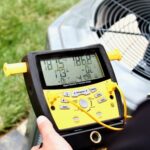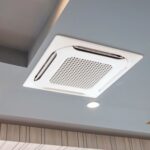Minolta’s autofocus (AF) telephoto lenses have long been celebrated for their exceptional quality and innovative designs. From the iconic “Beercan” lens to the unique 500mm f/8 Reflex, Minolta’s AF telephoto lineup offers photographers a range of tools that combine precision, performance, and enduring value.
The Iconic “Beercan” Lens: Minolta AF Zoom 70-210mm f/4
Introduced in 1985 alongside the Minolta Maxxum 7000—the first widely successful autofocus SLR—the Minolta AF Zoom 70-210mm f/4 quickly earned the nickname “Beercan” due to its size and shape. This lens is renowned for its constant f/4 aperture, solid build, and smooth bokeh effect. Despite its age, the “Beercan” remains popular among photographers for its sharpness and reliable performance.
The Unique Minolta AF Reflex 500mm f/8
Another standout in Minolta’s AF telephoto lineup is the AF Reflex 500mm f/8 lens. This lens holds the distinction of being the only autofocus mirror (catadioptric) lens ever produced for 35mm SLR cameras. Its mirror design allows for a compact and lightweight 500mm lens, making it highly portable compared to traditional telephoto lenses. However, like all mirror lenses, it produces donut-shaped bokeh due to the secondary mirror obstructing the front element.
Other Notable Minolta AF Telephoto Lenses
- Minolta AF Apo Tele 300mm f/2.8: A professional-grade lens introduced in 1985, known for its apochromatic design and inclusion in Minolta’s high-performance G series. It was later updated with features like a focusing distance encoder and a ring-type ultrasonic motor (SSM) for faster focusing.
- Minolta AF Zoom 75-300mm f/4.5-5.6: This lens offers versatility with its broad focal range, making it suitable for various photography genres, from portraits to wildlife. Over its production run, it underwent several design updates, transitioning from a metal to a plastic body to reduce weight.
Compatibility with Modern Sony Cameras
After acquiring Minolta’s camera division in 2006, Sony continued to support the A-mount system, ensuring that many Minolta AF lenses remain compatible with modern Sony A-mount cameras. This compatibility allows photographers to utilize classic Minolta glass on contemporary digital bodies, preserving the legacy and performance of these renowned lenses.
Conclusion
Minolta’s AF telephoto lenses have left an indelible mark on the photography world, offering innovative designs and reliable performance. Whether you’re a collector, a professional, or an enthusiast, exploring Minolta’s AF telephoto lineup provides valuable insights into the evolution of lens technology and enduring photographic quality.
FAQs
- Are Minolta AF telephoto lenses compatible with modern Sony cameras?
Yes, many Minolta AF lenses are compatible with Sony A-mount cameras, allowing photographers to use classic Minolta glass on contemporary digital bodies. - What makes the Minolta “Beercan” lens special?
The Minolta AF Zoom 70-210mm f/4, known as the “Beercan,” is celebrated for its constant f/4 aperture, solid build, sharpness, and smooth bokeh effect. - What is unique about the Minolta AF Reflex 500mm f/8 lens?
The Minolta AF Reflex 500mm f/8 is the only autofocus mirror lens produced for 35mm SLR cameras, offering a compact and lightweight design for a 500mm focal length. - Can Minolta AF lenses be used on Sony E-mount cameras?
Yes, with the appropriate adapter, such as the Sony LA-EA series, Minolta AF lenses can be used on Sony E-mount cameras. However, autofocus functionality may vary depending on the adapter and camera model. - Where can I purchase Minolta AF telephoto lenses today?
Minolta AF telephoto lenses can be found on various online marketplaces, such as eBay, and through specialized camera stores that offer vintage or used equipment.










